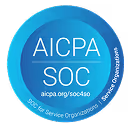Customer onboarding is a lot like assembling a LEGO set. Think of the process you go through to set up all the pieces in the set. Every step serves as an important piece in creating the final structure. It's the same with customer onboarding -- with the result being a seamless customer experience. By guiding customers through a step-by-step process, customer onboarding paves the way for businesses to build strong relationships with customers and get them to value faster. Much like the satisfaction gained from finishing a LEGO creation, onboarding done right empowers customers to confidently explore and maximize the full potential of your product. Modern businesses understand that it is about going beyond the sale to create a path that leads to customer satisfaction, mutual growth, and success.
Customer onboarding is aimed at familiarizing and engaging new customers, so they can effortlessly adopt your solution, see its value, and achieve their desired outcomes. It's the secret guide that propels your company's success. You're setting the stage for a long-lasting relationship by nurturing your customers right from the start. After all, you don't get a second chance to make a great first impression.
What is customer onboarding?
Customer onboarding is the process of getting new customers set up to understand and use a product or service successfully. It is more than just teaching customers how to use a few functionalities or finishing a couple of training programs. It is a well-planned and carefully designed process that helps customers reach their goals or solve a problem using your product. This usually involves the use of resources, interactions, integrations, change management, and training.
Customer onboarding typically begins after a customer purchases a product or service. The main focus lies in helping customers realize the value and functionality of your product or service. Customer onboarding not only helps maximize customer satisfaction and reduce churn for organizations. It also improves customer experience, product engagement, and customer loyalty.
Why is customer onboarding important?
Customer onboarding sets the tone for the customer's overall experience and relationship with your business. A successful and well-executed onboarding process can lead to:
- Increased customer satisfaction and retention rates
- Positive customer reviews and referrals
- Higher sales and revenue
- Improved customer loyalty and advocacy, fueling your business's reputation and growth in the long run
A well-executed customer onboarding process requires meticulous planning and strategy, designed explicitly to reduce customer churn, enhance customer experience, and propel business growth. It comes right after someone signs up or makes a purchase, leading to their first great experience with your product.
By optimizing this process, you ensure that customers stick around, having seen a clear and efficient path to success. Plus, a good onboarding experience can increase conversions and create opportunities for up-selling and cross-selling. When customer onboarding is done right, initial users often become your biggest fans, championing your product and supporting a successful land-and-expand strategy through positive word of mouth.
What are the benefits of customer onboarding?
Customer onboarding is an essential step in strengthening the relationship with customers. It is about launching a successful customer journey that cultivates ongoing engagement and satisfaction. This well-planned customer introduction to your product or service has numerous benefits that include:
1. Enhanced customer experience
A well-structured customer onboarding process facilitates a seamless transition for customers into your product ecosystem. It aids in making customers understand the functionalities of your product or service, reducing confusion, and enhancing user experience. For example, providing comprehensive tutorials and guides can enable customers to get the most out of the product right from the beginning. Responsive and dedicated customer support during onboarding can help address any potential issues, reducing frustrations and cultivating customer loyalty. Additionally, regular check-ins not only contribute to problem-solving but also demonstrate your steadfast commitment to the customer, fostering trust and satisfaction throughout the onboarding journey.
2. Increased customer retention rates
Improved customer experience leads to increased customer retention. The onboarding process is a crucial phase where customers decide whether to continue with the service or move to another competitor. By providing customers with the knowledge and tools they need to succeed, businesses can reduce churn rates and dramatically increase retention. Retention also helps save costs as acquiring a new customer is five to 25 times more expensive than retaining an existing one.
3. Positive Customer Lifetime Value or CLV
Customer onboarding lays the foundation for higher customer lifetime value by encouraging repeat purchases, fostering loyalty, and stimulating advocacy. With a good first impression and continued satisfaction, customers are more likely to stick around, ensuring a stable customer base for your business growth. Remember: higher retention means higher revenue for the organization. And a retained customer can become a brand ambassador, delivering free word-of-mouth advertising for your business.
How to set up a customer onboarding process?
A comprehensive customer onboarding process is often broken down into four main phases. Each phase plays a vital role in ensuring a smooth transition into using a product or service, and also in improving the overall customer experience.
At Rocketlane, we have a blueprint for our entire customer onboarding process. We then tweak it to suit each customer's unique requirements because we understand there's no one-size-fits-all methodology when it comes to customer onboarding.
Phase 1: Pre-kickoff + kickoff
The customer onboarding process can begin even before a customer makes a purchase. During the pre-kickoff stage, businesses should focus on formulating a clear onboarding strategy, setting expectations, and preparing all necessary materials or resources. Once the customer has officially signed up or made a purchase, the kickoff stage begins. This is where the initial introduction of your product or service to the customer takes place. Kickoffs help the team understand the customer's goals, timeline, and milestones, preventing any mishaps that may occur later. It's crucial to make a positive first impression and set the tone for the rest of the onboarding experience.
Use this free template for your kickoff meetings.
Phase 2: Implementation and setup
The second phase of the customer onboarding process involves getting the project started. This phase typically involves:
- Tailoring the product or service to the customer's needs
- Facilitating the implementation
- Guiding the customer through the initial setup
- Providing any needed technical support
This phase is all about ensuring the customer’s comfort and ease in starting to use the product or service to its full potential. Set measurable value-based metrics for regular intervals of 30, 60, and 90 days so the customer can realize ROI from their purchase. Keep them informed of the onboarding process's progress with regular status updates, check-ins, and periodic mini-demos.
Phase 3: Data migration, testing, and training
If your customer requires their data to be migrated from an old system or platform, this is when you help them with it. Along with this, some testing may be done to ensure everything works properly on their new workspace. This phase also involves training and educating customers about product functionalities through tutorials, demos, or even live training, depending on the complexity of your product or service. This phase is critical as it lays the foundation for increased product adoption among users on the customer's side. At Rocketlane, we have a change management strategy and an onboarding enablement package on hand to help with product adoption.
Phase 4: Go-live and hypercare
The final stage of the customer onboarding process is the go-live stage. This is when the customer starts using your product or service in their everyday operations. The go-live phase signifies that the customer can now move to the next stage of their journey - continued success or customer success. However, onboarding teams offer extended support to customers during this transition, calling it the hypercare period. They help customers deal with any issues that might come up as the customer begins to use the product or service in a live environment. This final stage is critical for ensuring customer satisfaction and, ultimately, customer retention.
Here's our step-by-step handoff guide on how to successfully transition customers from the onboarding team to the customer success team.
Customer onboarding best practices
Effective onboarding bridges the gap between customer acquisition and customer retention, setting the stage for long-term customer relationships. Here are some best practices to empower your customer onboarding process and bolster business growth.
1. Set clear expectations
Set clear expectations right from the beginning. Clarify what customers will gain from your product or service and explain what actions they are expected to take. This clarity can be achieved by providing resources like tutorials, webinars, and guides. Also, ensure that all communication channels (email, website, in-app, or Slack) are set up to regularly update the customer on progress and requirements.
2. Map the customer journey
Understanding the customer journey is pivotal to successful onboarding. It helps you to know the steps users take, their pain points, and their goals. This knowledge is essential for strategizing the onboarding process. For example, send timely and relevant notifications or guide new customers through app features using in-app prompts. Tools such as customer journey maps can give an overview of the user's experience, from their perspective, across all touchpoints.
3. Tailor onboarding for different customer segments
Not all customers are the same, so your onboarding process shouldn't be either. Segment your customers based on their needs, industry, role, or size. Then, tailor the onboarding process accordingly to provide relevant, valuable, and personalized experiences.
4. Continuously improve the onboarding process
Just as businesses evolve, so should your customer onboarding process. Regular upgrades and improvements should be part and parcel of your onboarding strategy. Use analytics to track where users drop off, conduct customer feedback surveys, and regularly refine the customer onboarding process accordingly. This constant evolution helps keep your customer onboarding process fresh, relevant, and effective.
Here are 4 elements to keep in mind when onboarding your customers.
5. Provide personalized support
Just as personalizing your customer onboarding process is essential, so too is personalized support. This could come in the form of a dedicated success manager, in-app live chat support or a robust help center with articles and videos. Make sure your customers know they can get assistance whenever they need it. Your support should be fast, friendly, and helpful, positively contributing to the overall customer experience and increasing customer retention.
6. Streamline the onboarding process
Navigating the onboarding process should be as easy as possible for your customers; simplicity is key. This could mean minimizing the steps needed to complete a task or making your UI user-friendly. Moreover, the onboarding process should be quick. No one likes lengthy processes. Ensure your basic onboarding can be completed promptly, allowing users to benefit from your product or service faster.
7. Focus on value and ROI
Prioritize delivering first value fast, emphasizing iterative progress and showcasing the tangible benefits of your product or service at every step. Align activities, meetings, and decision-making with a constant focus on providing value, ensuring a customer-centric onboarding journey.
8. Use the 70-30 rule
Ensure that your customer onboarding team takes on the majority of the workload, offering your customers a guided and less overwhelming experience. Provide clear steps for customer involvement, streamline integration efforts, and offer comprehensive guides, minimizing customer efforts and enhancing their onboarding experience.
9. Keep it simple, easy, and successful
Maintain visibility on both sides, adopt a consistent phased approach, and enhance the customer experience by utilizing an all-in-one dedicated domain for your customer onboarding. These simple yet effective strategies contribute to a successful and streamlined onboarding journey, ensuring customers become advocates for your business.
10. Employ milestones and checkpoints in the customer onboarding process
Incorporate functional milestones and checkpoints into your onboarding process, showcasing customer accomplishments and motivating ongoing engagement. Communicate that onboarding extends beyond go-live, culminating when customers seamlessly integrate your solution into their daily operations, thereby increasing customer lifetime value.
By employing these best practices, you can augment not only the process of customer onboarding but also improve customer experience. This in turn could lead to business growth. Considering that the ultimate goal is to ensure your onboarding effectively aids customers in achieving success with your product or service, a keen focus on these practices could drive higher customer retention rates.
Here's how to build an effective customer onboarding playbook for a seamless customer onboarding process.
Metrics and methods to track customer onboarding success
When it comes to understanding the success of your customer onboarding process, there are several key metrics and Key Performance Indicators (KPIs) worth tracking.
1. Identify the right customer onboarding metrics to track
Several metrics can give you an in-depth understanding of your customer onboarding process, such as:
- Time to first value (TTFV): This measures the period between a customer coming onboard and when they first realize the value of your product or service. The shorter the timeframe, the more effective your onboarding process is thought to be.
- Net promoter score (NPS): This is a measure of how likely a customer is to refer your product or service to others. A high NPS score after the onboarding process shows that the experience was positive for newly onboarded clients.
- Customer satisfaction score (CSAT): This directly measures if your customers are satisfied with your product or service.
- Time spent in onboarding: By tracking how much time people spend in your onboarding process, you can gauge whether it's too lengthy and confusing, or too rushed and confusing. You can then make appropriate changes to improve your customer onboarding process.
- User engagement rate or product adoption rate: Measure how frequently and thoroughly users are interacting with your product or service. Low engagement could suggest that the onboarding process isn't effectively teaching customers how to get the most value from what you're offering.
2. Analyze customer feedback
Apart from key metrics, collecting and analyzing customer feedback is another crucial way to measure the success of your onboarding program. Regular surveys, feedback sessions, and even one-on-one calls can provide much-needed insights into what customers like or dislike about your onboarding process. This feedback can provide critical tips on areas of improvement and innovation.
You could also find your cohort and connect with fellow leaders and practitioners managing customer onboarding and implementations worldwide on the Preflight community.
3. Make data-driven improvements
The metrics and feedback collected are valuable resources that allow you to develop data-informed strategies for your onboarding process. For example, if your TTFV is higher than the industry average, it's a sign that customers are struggling to grasp how to use your product or service. This may prompt a need for more comprehensive training or simpler user interfaces. Similarly, low NPS or CSAT scores may also call for improvisations in the customer onboarding process to improve customer experience and contribute to business growth.
By paying attention to these metrics and KPIs, you can gain a clearer understanding of what's going well in your onboarding process and where there's room for improvement. Understanding and efficiently implementing these metrics and KPIs can be a game-changer for your customer onboarding process, ultimately leading to higher retention rates, improved customer experience, and overall business growth.
Try Rocketlane, the #1 customer onboarding software for your business
If you're intent on business growth and improving customer experience for your customers, you need to try Rocketlane. Rocketlane is your all-in-one solution for collaborative customer onboarding, seamlessly integrating project management, real-time communication, and customer collaboration into a powerful platform. It simplifies your customer onboarding process with features that include automations, detailed analytical reports, and 24/7 support, ultimately ensuring a smoother, more efficient customer onboarding journey.
Here are 8 reasons to choose Rocketlane and transform your customer onboarding process:
- Accelerate time-to-value: Experience a decrease in time-to-value, ensuring swift realization of benefits. Achieve a reduction in go-live time, streamlining the onboarding journey.
- Enhance customer satisfaction: Enjoy a 3X improvement in CSAT scores, delivering a delightful customer experience. Leverage shared customer portals, interactive plans, emails, and Slack integration for continuous sync with customers.
- Streamline project management: Gain 360° visibility into customer projects, easily assigning tasks and staying flexible with custom project fields. Unify project management tools, documents, sheets, and forms under one platform, eliminating tool hopping.
- Templatize for efficiency: Create dynamic templates for bespoke project plans, minimizing effort in crafting customized plans. Seamlessly integrate with CRM, automating project launches and pushing real-time information back to your CRM.
- Manage and optimize your resources: Effortlessly manage resources, understand capacity, and forecast confidently. Optimize time tracking with calendar integrations, smart suggestions, and auto carry-overs.
- Automate your workflows: Execute playbooks without intervention, orchestrating project automation effortlessly. Build custom workflows to eliminate tedious, repetitive tasks, ensuring control without constant oversight.
- Centralize and collaborate within a single tool: Centralize project information, communication, and cross-company collaboration in one platform. Keep your team, customers, and partners on the same page, making collaboration efficient and enjoyable.
- Optimize processes with valuable insights and analysis: Optimize go-live dates with insights that track, monitor, and improve delivery timelines. Stay attuned to customer sentiments with automated CSAT surveys and analyze team performance and utilization.
And this is just the tip of the iceberg. Begin your journey with Rocketlane today and streamline your customer onboarding processes. Book a demo now!
Frequently asked questions (FAQs) on customer onboarding
1. What is customer onboarding?
Customer onboarding refers to the process of welcoming and guiding new customers as they get acquainted with a product or service. It involves providing them with the necessary information, resources, and support to ensure a smooth and successful adoption of the offering.
2. Why is customer onboarding important?
Customer onboarding is crucial because it sets the tone for the customer's entire relationship with a business. It helps customers understand how to get the most value out of a product or service, reduces confusion or frustration, and increases satisfaction and loyalty.
3. What are the key goals of customer onboarding?
The main objectives of customer onboarding are to educate customers about the product, help them experience early wins, build trust and rapport, and set clear expectations. It aims to empower customers to become self-sufficient and confident users.
4. How long should the customer onboarding process last?
The duration of customer onboarding can vary depending on the complexity of the product or service. Ideally, it should be designed to quickly get customers up and running, but it can extend over a few days to a few weeks, focusing on delivering value and building a relationship.
5. What are some common challenges in customer onboarding?
Some challenges in customer onboarding include overwhelming customers with too much information, not personalizing the experience, lack of clear communication, and not aligning onboarding with customer needs and goals. Additionally, handling customer objections and addressing unexpected issues can also pose challenges.
6. How can businesses personalize the customer onboarding experience?
Personalizing the customer onboarding experience involves understanding each customer's unique needs and tailoring the process accordingly. This can be achieved by using customer data, conducting surveys or interviews, and offering tailored resources, training, or support.
7. What are some best practices for effective customer onboarding?
Some best practices for effective customer onboarding include:
- Keeping the process simple and intuitive
- Providing proactive and timely support
- Offering clear and concise documentation and tutorials
- Leveraging technology tools such as Rocketlane
- Monitoring and collecting continuous feedback to improve and streamline your customer onboarding process
8. How can customer onboarding help in reducing churn?
Effective customer onboarding plays a significant role in reducing churn by ensuring that customers understand the value of a product or service and feel supported in their journey. By addressing their pain points early on and helping them achieve success, businesses can increase customer retention and loyalty.
9. What is a customer onboarding software?
A customer onboarding software is a dedicated solution that is designed to streamline and enhance the process of setting up new customers to use your service or product. It helps build strong customer relationships, reduce customer churn, and improve customer retention.
10. What is the best customer onboarding software?
Rocketlane is the #1 customer onboarding platform that can help businesses automate and streamline their onboarding processes. With features like centralized customer onboarding workflows, task assignments, and collaboration tools, Rocketlane enables teams to deliver a seamless onboarding experience and boost customer success.












